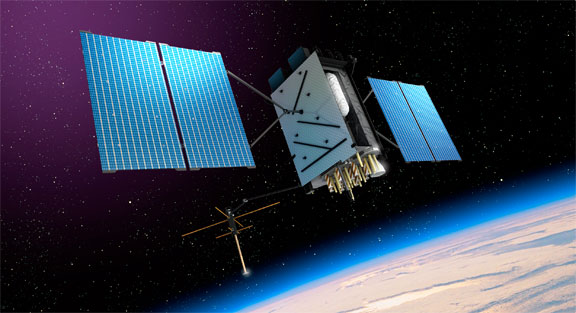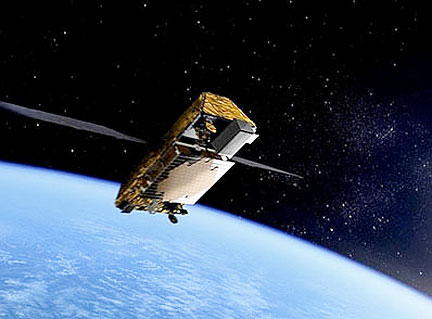...the first spacecraft’s propulsion core module to the company’s Denver-area GPS Processing Facility (GPF). The milestone represents the program’s first major hardware delivery for GPS III Space Vehicle 1 and highlights the satellite’s initial Assembly, Integration and Test activities in the GPF.
The propulsion core contains the integrated propulsion system and serves as the structural backbone of the satellite. Developed and tested at Lockheed Martin's Mississippi Space & Technology Center, the propulsion subsystem is essential for maneuvering the GPS III satellite during transfer orbit to its final location as well as conducting on-orbit repositioning maneuvers throughout its mission life.
"The delivery of the propulsion core demonstrates that this program is on firm footing and poised to deliver on its commitments," said Lt. Col. Todd Caldwell, the U.S. Air Force’s GPS III program manager. "In this challenging budget environment, we are focused on efficient program execution to deliver critical new capabilities to GPS users worldwide.”
The propulsion system benefits from a Lockheed Martin initiative to improve the manufacturability of GPS III. The activity simplified plumbing routing and reduced welds by 25 percent compared to similar spacecraft, which results in significantly reduced cycle time and cost for all GPS III production satellites. To reduce risk and overall program costs for the government, the team is first fielding a full-sized satellite prototype, known as the GPS III Non-Flight Satellite Testbed (GNST). The approach is used to identify and solve development issues prior to integration and test of the first GPS III satellite.

Artistic rendition of GPS III, courtesy of Lockheed Martin
The GPS III program will affordably replace aging GPS satellites while improving capability to meet the evolving demands of military, commercial and civilian users. GPS III satellites will deliver better accuracy and improved anti-jamming power while enhancing the spacecraft’s design life and adding a new civil signal designed to be interoperable with international global navigation satellite systems. In 2008, Lockheed Martin was awarded the contract for the design, development and production of the GNST and the first two GPS III satellites, with priced options for up to 10 additional satellites. In early 2012, the Air Force exercised a $238 million option for production of the next two satellites, GPS III space vehicles three and four. The Air Force plans to purchase up to 32 GPS III satellites. The GPS III team is led by the Global Positioning Systems Directorate at the U.S. Air Force Space and Missile Systems Center. Lockheed Martin is the GPS III prime contractor with teammates ITT Exelis, General Dynamics, Infinity Systems Engineering, Honeywell, ATK and other subcontractors. Air Force Space Command's 2nd Space Operations Squadron (2SOPS), based at Schriever Air Force Base, Colorado, manages and operates the GPS constellation for both civil and military users.

Artist's concept of an Iridium NEXT satellite in space.
Credit: Thales Alenia Space
...is one step closer to becoming reality as Lockheed Martin completed a major software design milestone. Lockheed Martin’s Application Software for the Iridium NEXT constellation held the Critical Design Review, which showed that the design is at a high level of maturity and keeps this new generation of communications satellites solidly on schedule toward a first launch in 2015.
The Iridium NEXT satellites are slated to replace those currently in the Iridium® constellation of 66 cross-linked low-Earth orbiting satellites. Iridium NEXT will provide continuous coverage over 100 percent of the Earth’s surface as well as substantially enhance Iridium mobile communications services. Lockheed Martin, a member of the Iridium NEXT Mission Team under contract to develop and build the NEXT constellation of satellites, completed the Critical Design Review in September. During this review, the design for the application software, which performs the primary role in supporting subscriber services to user terminals, was rigorously reviewed by teams from Iridium, Thales Alenia Space and Lockheed Martin to ensure it will support all the functions needed for Iridium NEXT satellites. Lockheed Martin’s architecture fully leverages a high performance multi-processor hardware platform and easily incorporates new services via insertion of software modules. This approach results in a satellite that is much more cost effective, modular and reconfigurable.

